Watermelons are a beloved summertime treat, but consuming a spoiled one can lead to unpleasant experiences. Knowing when your watermelon is no longer safe to eat is crucial for your health and enjoyment. Here, we delve into eight warning signs that your watermelon might have crossed the line from refreshing to risky, ensuring you can savor each juicy bite with peace of mind.
Dull and Uneven Color
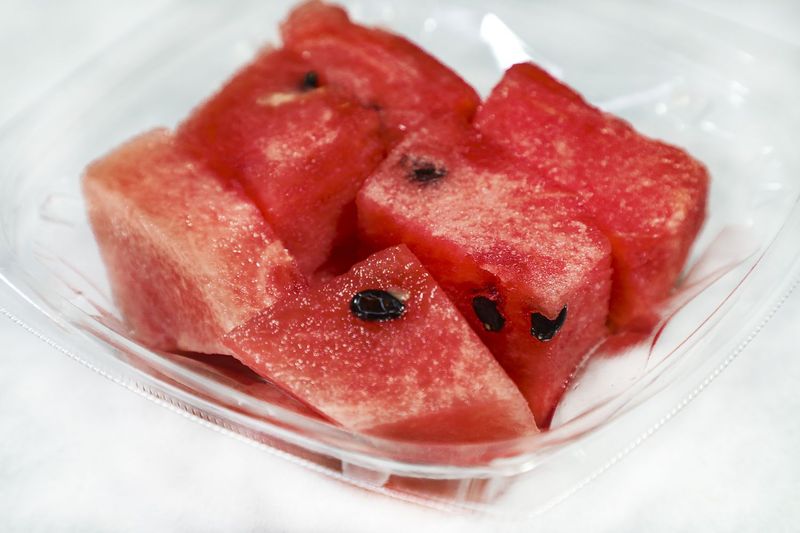
A vibrant green watermelon might be the perfect summer picture. However, when the glossy green turns dull, it raises a red flag. The color of a watermelon should be consistent, with the underside displaying a creamy yellow spot from where it sat on the ground.
Uneven patches, especially those of yellow or brown, suggest an aging fruit past its prime. The dullness often accompanies textural changes, indicating potential spoilage.
A fresh watermelon invites you with its lively appearance. A faded hue, on the other hand, whispers tales of neglect and time, urging caution before consumption.
Soft Spots and Bruising

A watermelon should feel firm and robust when handled. Soft spots and bruises are signs of internal damage. These conditions can create breeding grounds for bacteria, turning your sweet snack into a food safety hazard.
The firmness of a watermelon is a testament to its freshness. Encountering mushy areas when you press lightly suggests it’s time to let go. The structural integrity of the fruit is compromised, making it unfit for consumption.
A watermelon with such blemishes is a ticking time bomb, waiting to spoil your day with unwanted surprises.
Sour or Off Smell

The sweet aroma of a fresh watermelon is unmistakable. But when the scent turns sour or off, it’s a clear indication of spoilage. This change in smell is often due to fermentation inside the fruit, which can lead to an unpleasant taste and potential health risks.
Engaging your sense of smell is an effective way to judge a watermelon’s freshness. A sour smell suggests microbial activity, a sure sign that the fruit should be discarded.
A watermelon should promise a refreshing experience, not an olfactory assault. Trust your nose on this one.
Mold Growth
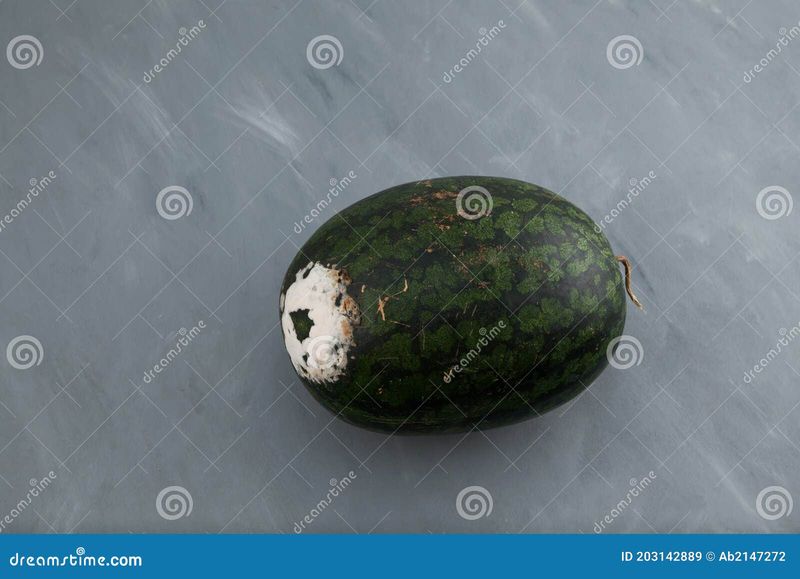
Mold growth on a watermelon is an undeniable sign that it’s no longer safe to eat. Mold can appear as fuzzy spots in white, green, or black hues. It indicates that the fruit has been exposed to conditions conducive to decay.
While some might suggest cutting away moldy sections, it’s better to avoid risks by discarding the entire fruit. Mold spreads more than what’s visible, affecting the entire watermelon.
The fresh, crisp texture of watermelon is compromised with mold. It’s not worth gambling your health over a few salvageable bites.
Cracks or Splits
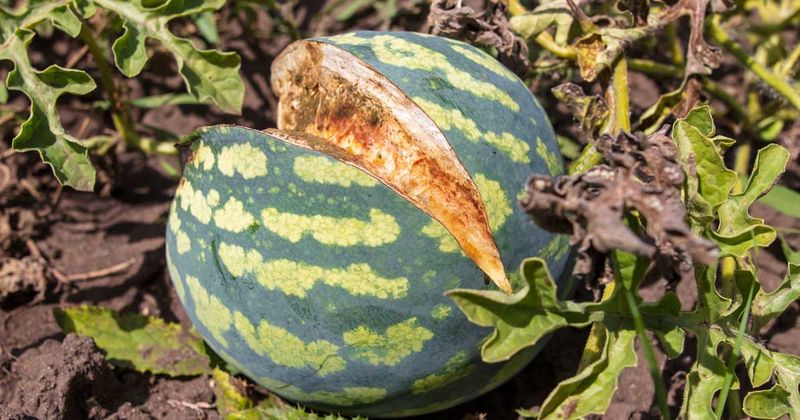
If your watermelon has cracks or splits, it’s likely no longer safe to eat. These fissures can occur due to internal pressure, often because of bacterial activity. Such openings provide easy access for contaminants.
A pristine watermelon should have an intact, smooth surface. Cracks signify that the fruit’s integrity is compromised, possibly leading to a rapid deterioration of quality and safety.
Think of these cracks as nature’s distress signals. They are a clear cue to proceed with caution and consider other, fresher options.
Unpleasant Taste
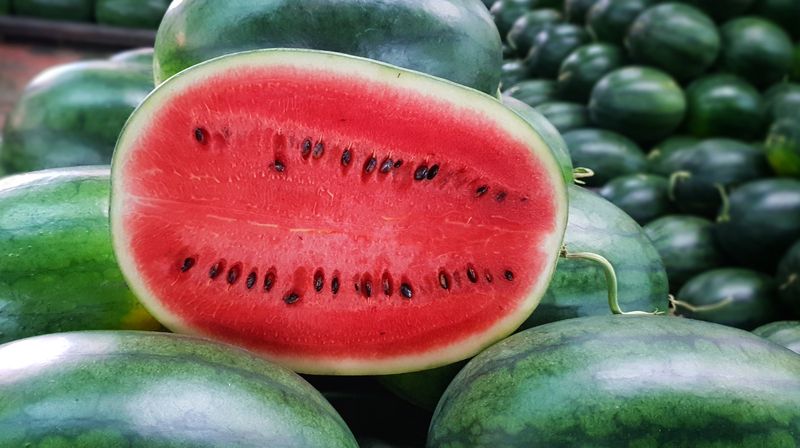
A watermelon’s taste should be sweet and juicy. If it tastes sour or off, don’t continue eating. An unpleasant taste means the watermelon is past its prime and possibly fermenting, making it unsafe.
The flavor change is often accompanied by textural shifts, like mushiness, which compounds the issue. It’s a sensory red flag that shouldn’t be ignored.
Your taste buds serve as a reliable guide to determine freshness. A watermelon that doesn’t deliver the expected deliciousness likely harbors underlying spoilage issues.
Presence of Insects
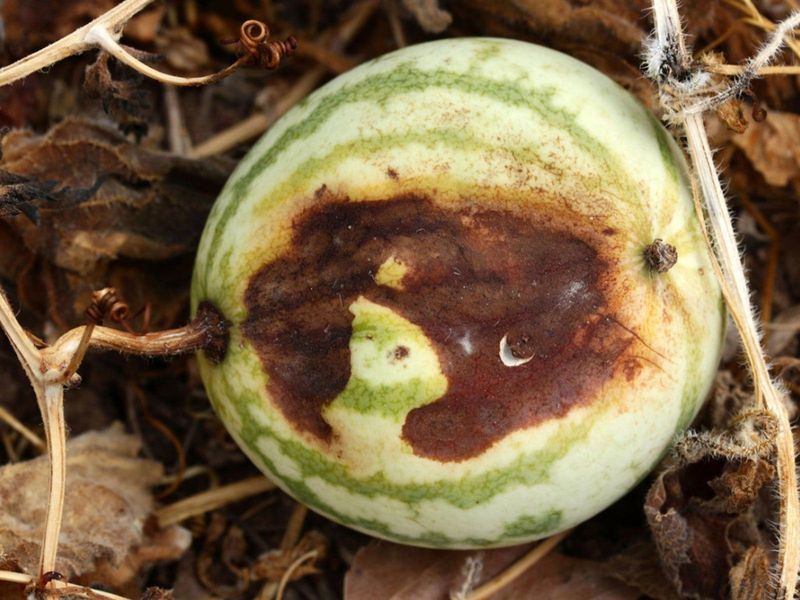
The presence of insects on a watermelon is a bad omen. Insects like ants or fruit flies are attracted to the sugar content, especially when the fruit starts breaking down.
Insects indicate that the watermelon is undergoing decomposition. Their presence makes the fruit unappetizing and increases the risk of contamination and disease transmission.
A watermelon should be a clean and refreshing treat. An infestation suggests otherwise, compromising both the appeal and safety of your summertime delicacy.
Excessive Oozing
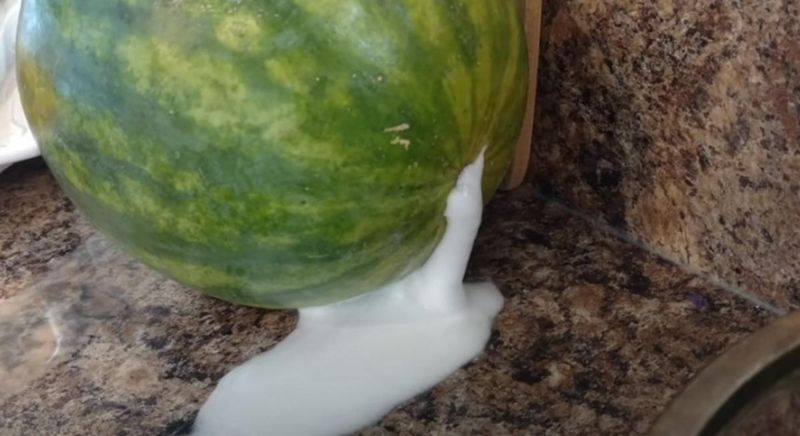
A watermelon that leaks excessive fluid is past its peak freshness. This oozing often indicates internal breakdown due to overripening or bacterial activity.
While a juicy watermelon is delightful, too much liquid suggests it’s decaying from the inside out. It’s a visual cue that the structural integrity is failing, marking it unsafe to eat.
Check for any unexpected wetness on the surface, as it typically heralds spoilage. This kind of moisture isn’t the refreshing juiciness you’d expect, but rather a sign of rot.
Leave a comment